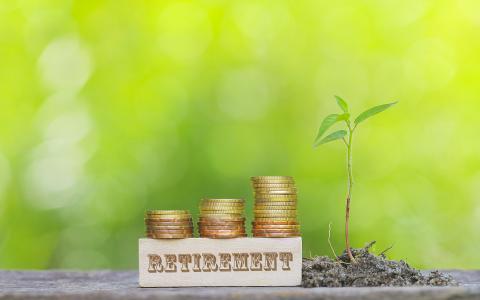
There is a longstanding 4% rule of thumb that was developed in the mid-1990s outlining how much a person could safely withdraw from retirement savings each year and still have a nest egg to last a lifetime.
But many investment advisors have suggested that this is old-school and that there are a variety of factors and new possibilities to consider.
Many advisors like CFP David Storch at Rose Capital Investments think that while it's a good rule of thumb, it doesn’t address issues such as increasingly high healthcare costs, longer life expectancies and jobs that are sustainable throughout old age.
So while the 4% rule is a good baseline, it’s necessary to plan according to your lifestyle and expectations during retirement.
Here are some additional investment ideas that could be right for you.
"Tax-deferred investing is extremely important," says Bruce W. McNeilage of Kinloch Partners, LLC.
"It is however limited in 401(k)s, IRAs etc." He suggested that being taxed at the highest tax rate versus paying a lower tax rate is somewhat misleading. Many people defer taxes on their investments because they don’t want to pay 30% or 40% income taxes when in fact they could be deferring to a higher tax bracket, say 50% or 60% if tax laws change.
Real estate, primarily single-family rentals, provides several attributes that savings do not, he recommends. If you buy a rental house with a small capital investment, the house will appreciate over time on a tax-deferred basis.
Owners will also benefit by depreciation expense on their tax returns.
Single-family rental properties can be paid off over 15 or 20 years and once a rental house is free and clear it will create income for the owner, and with rent increases, this income will not only be predictable but can increase every year.
"I tell people if they can build their portfolio to five houses they could have $1 million of free and clear real estate that has grown tax-deferred and given them tax advantages by using depreciation, McNeilage said.
"The 4% rule in today's market environment, a traditional 60/40 stock/bond portfolio, could result in portfolio failure," said Brian Saranovitz, co-founder and president of Your Retirement Advisor.
The yields on bonds are at historic lows and 4% is simply too much draw on the portfolio.
A safer rule of thumb, when employing a 60/40 portfolio, is 2-3%.
To that end, Saranovitz developed the a multi-discipline retirement strategy (or MDRS) based on a combination of globally diversified stocks and high-quality fixed indexed annuities that offers growth with protection…a combination critical as one approaches retirement. It should also be coupled with a S.W.I.P and a buffer strategy in times of severe stock market losses.
In addition, an effective tax reduction strategy can potentially raise a retiree's safe withdrawal rate even higher.
MDRS allows either a higher withdrawal rate or a sustained source of income for life," he said.
MDRS is based on leading retirement research from several retirement academics and economists, as well as Saranovitz's own analysis and experience. MDRS proves itself out with data-driven retirement projections utilizing sophisticated software.
These projections show a client how the mix of stocks and annuities, in both negative and positive market environments, can support the 4% safe withdrawal rule and allow a retiree to sustain income for life.
Further details on this strategy can be found in Saronavitz's white paper, Retirement Portfolio Design for a Changing Economy.
There are many other solid suggestions on how to live at or above the 4% retirement benchmark.
The best advice is to reach out to your trusted investment advisor early and yearly to adjust your plan as necessary. Ultimately each and every person's readiness for retirement cannot be predicated on one simple rule.
Emmy Winning TV Executive, Travel Expert, Speaker, and Author.



